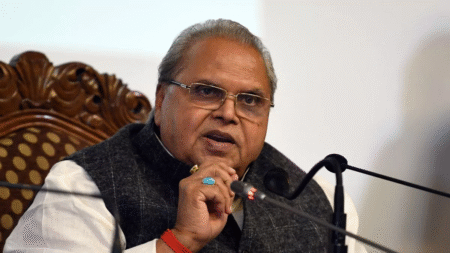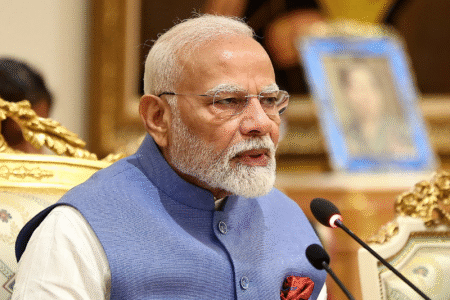Know which is India’s Richest and Poorest States 2024
A recent working paper from the Economic Advisory Council to the Prime Minister (EAC-PM) has shed light on India’s Richest and Poorest States 2024. While the southern states have emerged as powerhouses of India’s GDP, others like West Bengal, once a leading economic force, have experienced a puzzling decline.

Southern States Drive 30% of India’s GDP
It is important that the southern region, which includes Karnataka, Andhra Pradesh, Telangana, Kerala, and Tamil Nadu, Has contributed to 30% of India’s GDP. These states’ per capita incomes were lower than the national average in 1991. However, they became growth engines once India’s economy was liberalized.
Table of Contents
- Karnataka: The booming tech sector in Karnataka, particularly in Bengaluru, has been a key driver. The state has attracted significant global investment and has a flourishing startup ecosystem.
- Tamil Nadu: This state’s robust industrial sector, including automotive and textile hubs, has played a pivotal role in its growth.
- Telangana: Since its formation in 2014, Telangana has risen as a major player in India’s economy, becoming one of the top contributors to the national GDP.
These states’ economic progress showcases the benefits of capitalizing on reforms introduced after 1991, positioning the southern region as a crucial contributor to India’s economic health.
West Bengal’s Sharp Economic Decline
In sharp contrast, West Bengal has witnessed a steady decline in economic performance. Once accounting for 10.5% of India’s GDP in 1960-61, its share has fallen to 5.6% in 2024. Its per capita income, which was once 127.5% of the national average, now languishes at 83.7%, putting it behind traditionally less prosperous states like Rajasthan and Odisha.
Also Read : Top 10 Emerging Economies in 2024 & their Growth Potential.
The report called this a “continuous decline” over several decades. Experts are baffled by West Bengal’s inability to sustain its early economic success despite its strategic maritime location and rich historical legacy. A key factor often debated is the state’s political landscape, which underwent significant changes post-liberalization, possibly contributing to its current economic stagnation.
Punjab and Haryana: Diverging Economic Trajectories
Another striking contrast is found between Punjab and Haryana, two northern states once close in economic performance.
- Punjab, a leading beneficiary of the Green Revolution in the 1960s and 1970s, saw its per capita income rise to 169% of the national average by 1971. However, post-1991, the state has seen little growth, with per capita income dropping to 106% of the national average.
- Haryana, on the other hand, has experienced significant economic growth since 2000. Today, its per capita income stands at 176.8% of the national average, far surpassing that of Punjab.
This divergence highlights how regional policies and infrastructure development can dramatically influence a state’s economic trajectory.
Maharashtra Still Tops GDP, but Faces Challenges
Maharashtra, home to India’s financial capital Mumbai, remains the largest contributor to the national GDP, accounting for 13.3%. However, its share has declined from over 15% in previous years. Despite its impressive per capita income of 150.7% of the national average, the state no longer ranks among the top five in terms of per capita income.
Poorest States Struggle to Catch Up
States like Uttar Pradesh and Bihar, despite their large populations, contribute relatively little to India’s GDP. In 1960-61, Uttar Pradesh accounted for 14% of the national GDP; by 2024, this had dropped to 9.5%. Meanwhile, Bihar, despite being the third-most populous state, contributes just 4.3% to the national economy.
While Odisha has made strides in improving its economic standing, Bihar continues to lag, unable to match the growth of other states despite various reform efforts.
Stats of India’s Richest and Poorest States
| State | GDP Contribution (2024) | Per Capita Income (as % of National Average) |
|---|---|---|
| Karnataka | 30% (Southern States Total) | 150.7% |
| Tamil Nadu | 30% (Southern States Total) | 140.3% |
| Telangana | 30% (Southern States Total) | 120.5% |
| West Bengal | 5.6% | 83.7% |
| Uttar Pradesh | 9.5% | 70.1% |
| Bihar | 4.3% | 60.5% |
| Maharashtra | 13.3% | 150.7% |
What’s Next for India’s Economy?
The report points out that regional differences have gotten bigger since liberalization, with southern states really taking advantage of the reforms and pushing national growth forward. The decline in West Bengal is particularly puzzling and calls for a closer look. The state’s drop from its previous economic success emphasizes the urgent need for a fresh policy focus and smart reforms.
The findings from the EAC-PM spark an important discussion about how to help states that are falling behind and lessen India’s Richest and Poorest States gap. Since the country’s GDP growth is increasingly dependent on just a few regions, it’s super important for policymakers to make sure every state gets a fair shot at thriving.
Read Full Report : https://www.indiatoday.in/business/story/indias-richest-and-poorest-states-south-leads-gdp-race-west-bengal-stumbles-2601807-2024-09-18













